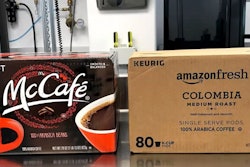
The following are five key considerations when the physical testing is complete. These, in combination with the pre-testing considerations (find them at pwgo.to/5847), will help ensure the greatest value is gained for your pre-shipment verification.
1) Thoroughly document testing details. Many overlook and take for granted this critical step. Fully documenting your testing rationale will provide you with a valuable reference moving forward should a damage occur. Key elements include numerous pictures before, during, and after testing as well as clearly listing packaging and product makeup and what you have defined as acceptable levels of damage. Furthermore, it provides a stronger case when dealing with carrier damage issues as you have a clear rationale for the work done.
2) Understanding the results. Testing results provide you with an understanding of the level of risk you are willing to assume for a given packaged-product configuration traveling through a given supply chain leg. Simply achieving a ‘pass’ is failing to leverage the full value in testing. As shared in the five pre-test considerations (pwgo.to/5847), pass/fail criteria are determined by the collective of stakeholders, and ultimately establish the level of risk your business is willing to assume. Undermining the benefit of testing by attempting to circumvent the discussion on risk is delaying the unfortunate situation of dissatisfaction. Assuming a high level of risk by ‘passing’ a packaged product for the sake of just doing business will inevitably result in denied claims, customer complaints of damaged products, and eroded brand equity.
3) Monitor shipments. It is important to note that test protocols can evaluate the effectiveness of packaging only for hazards represented in the protocol. For example, a test procedure that does not include a compression test is unable to evaluate a packaged product’s ability to withstand warehouse stacking loads. Knowing the distribution environment in detail can help users select an appropriate test.
Additionally, detailed shipping records for not only the test sample but the entire product line should be maintained, including number of units shipped and the number damaged in distribution. This performance, when compared to results from the laboratory tests, can be used to evaluate the effectiveness of tests and guide future testing decisions.
4) Leveraging testing outcomes. Best practice is to test all products, but if budgets and/or timelines won’t allow, then some testing is better than no testing. Bridging knowledge gaps is intended to provide the test user with best practices on how to apply the learnings from testing to the broadest number of products possible.
To ensure that you are informed prior to bridging knowledge gaps of packaged-product tests is to create a detailed matrix of product and packaging attributes, i.e. all packaging and product specifications. This enables a clear understanding of the packaged products attributes so that those with similar attributes can be congregated together. This is also allowing for a testing plan that captures the full range of packaged products, i.e. small, medium, large, extra-large. By having the full range defined, it becomes easier to understanding the packaged products that exist in your testing gaps.
Lastly, if field damage levels for those items not tested is similar to those that were tested, then you should have greater confidence in the risk-based assumptions made. If, however, any particular packaged product shows damage trends that are deemed excessive when compared to those items that were tested, that packaged-product should be tested.
5) Retesting. Testing should be repeated periodically or as necessary to maintain the quality characteristics of the packaged product on arrival. In addition, tests must be repeated whenever there is a change in the product, the package, or the process. Some changes are not included in this requirement, but only if the change is not associated with potential performance in any way.
Changes in the product can include changes in:
• Design (configuration, components, accessories, etc.)
• Size/weight (dimensions, shape, mass, center of gravity, etc.)
• Materials (type, construction, fabrication, gauge, etc.)
Changes in the package can include changes in:
• Configuration (individual package or unit load, container type and subtype, style, design, interior packaging, etc.)
• Size/weight (dimensions, shape, mass, caliper, gauge etc.)
• Materials (corrugated, plastic, metal, glass, etc.)
• Components (closures, labels, straps, pallets, skids, wraps, etc.)
Changes in the process can include changes in:
• Manufacturing/assembly (vendor, location, automation, etc.)
• Filling (equipment, speed, automation, etc.)
• Distribution system (parcel delivery, LTL, intermodal, etc.)
When there is any doubt as to whether a change will potentially affect performance, retesting should be performed. Determining when retesting is required may involve knowing and tracking specification details of both the package and the product, such as new or changed components, materials, interior packaging, closure methods, etc.
The need for testing comes from the difficulty of predicting what will happen in large-scale operations, coupled with the requirement to make decisions prior to implementation. Essentially, every test comes from the need to make a decision. The test results provide the decision maker with information to help maximize correct decisions. The decisions supported by pre-shipment performance testing of transport packaging are typically about how well the package will protect the contents during distribution. Effective package design benefits from confidence in the diligence and hopefully these pre- and post-testing considerations will help ensure you get the most from the diligence put forward through pre-shipment testing.
ISTA is a non-profit, member driven association for the packaging and logistics sectors. For over 70 years, ISTA has helped its members control costs, damage, and resources during the distribution of packaged-products. ISTA’s members include product manufactures, carriers, suppliers, testing laboratories and educational and research institutions.






















